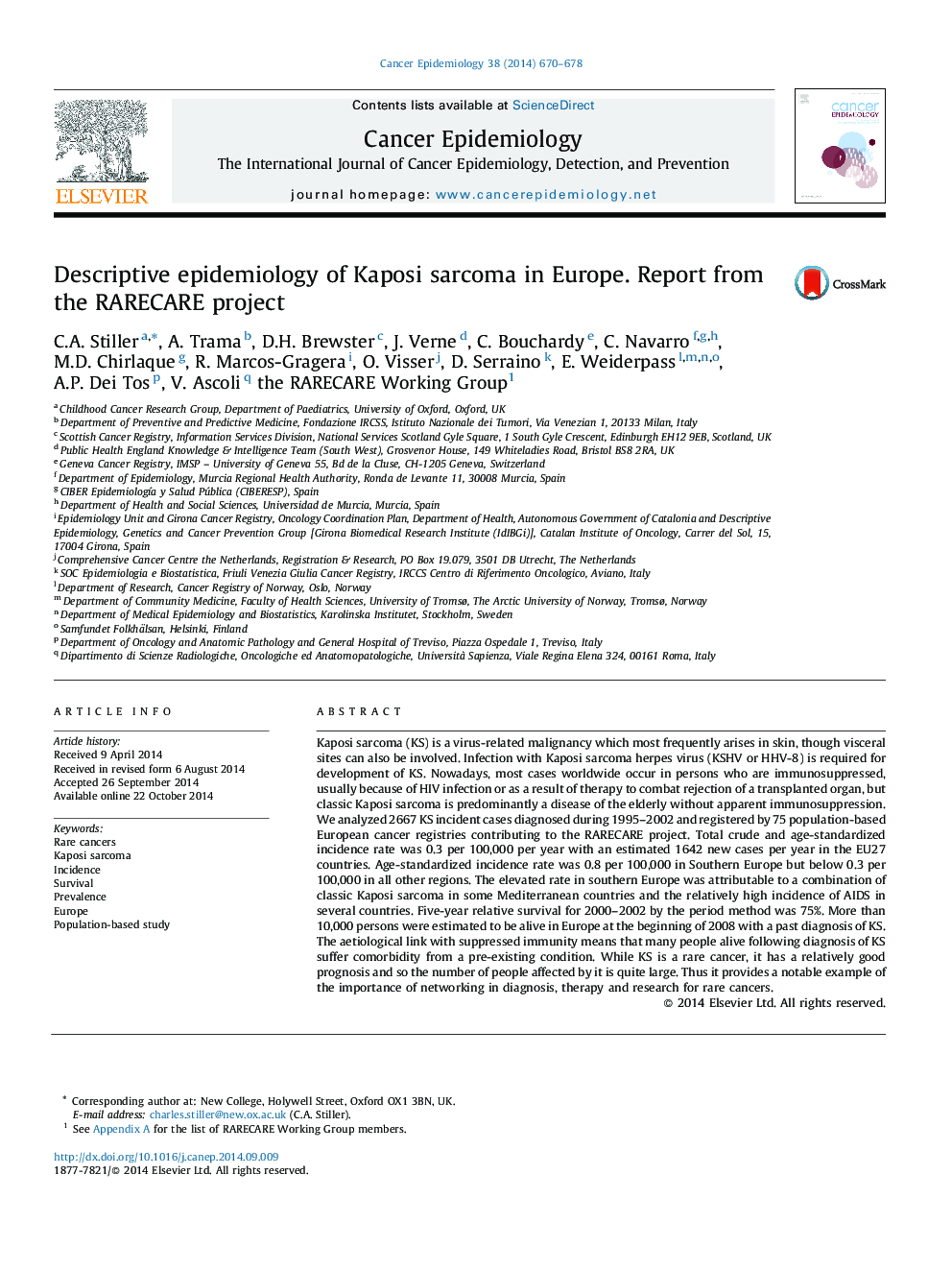| Article ID | Journal | Published Year | Pages | File Type |
|---|---|---|---|---|
| 10897547 | Cancer Epidemiology | 2014 | 9 Pages |
Abstract
Kaposi sarcoma (KS) is a virus-related malignancy which most frequently arises in skin, though visceral sites can also be involved. Infection with Kaposi sarcoma herpes virus (KSHV or HHV-8) is required for development of KS. Nowadays, most cases worldwide occur in persons who are immunosuppressed, usually because of HIV infection or as a result of therapy to combat rejection of a transplanted organ, but classic Kaposi sarcoma is predominantly a disease of the elderly without apparent immunosuppression. We analyzed 2667 KS incident cases diagnosed during 1995-2002 and registered by 75 population-based European cancer registries contributing to the RARECARE project. Total crude and age-standardized incidence rate was 0.3 per 100,000 per year with an estimated 1642 new cases per year in the EU27 countries. Age-standardized incidence rate was 0.8 per 100,000 in Southern Europe but below 0.3 per 100,000 in all other regions. The elevated rate in southern Europe was attributable to a combination of classic Kaposi sarcoma in some Mediterranean countries and the relatively high incidence of AIDS in several countries. Five-year relative survival for 2000-2002 by the period method was 75%. More than 10,000 persons were estimated to be alive in Europe at the beginning of 2008 with a past diagnosis of KS. The aetiological link with suppressed immunity means that many people alive following diagnosis of KS suffer comorbidity from a pre-existing condition. While KS is a rare cancer, it has a relatively good prognosis and so the number of people affected by it is quite large. Thus it provides a notable example of the importance of networking in diagnosis, therapy and research for rare cancers.
Related Topics
Life Sciences
Biochemistry, Genetics and Molecular Biology
Cancer Research
Authors
C.A. Stiller, A. Trama, D.H. Brewster, J. Verne, C. Bouchardy, C. Navarro, M.D. Chirlaque, R. Marcos-Gragera, O. Visser, D. Serraino, E. Weiderpass, A.P. Dei Tos, V. Ascoli, the RARECARE Working Group the RARECARE Working Group,
